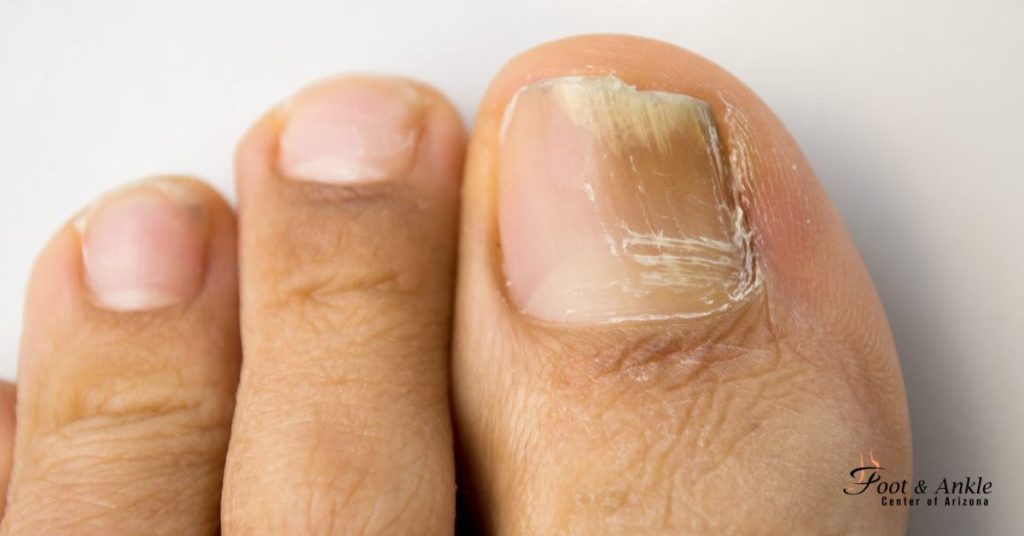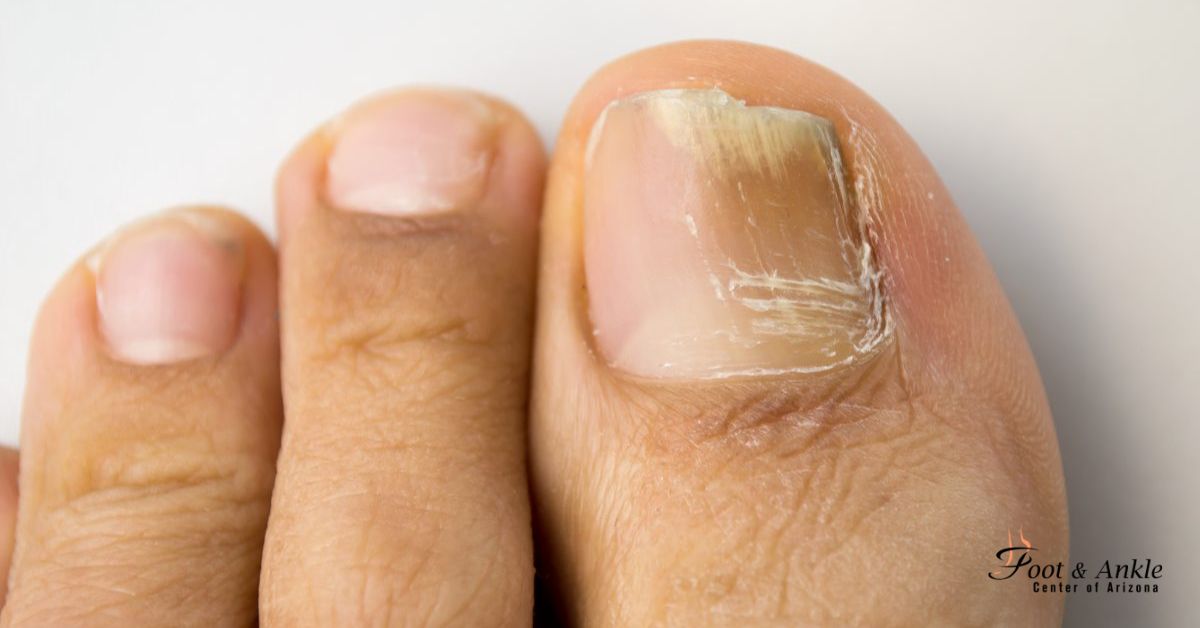Toenail fungus, medically known as onychomycosis, is a not unusual situation that influences many individuals. It’s characterized by means of a fungal infection that starts as a white or yellow spot underneath the top of your toenail. As the fungal infection progresses, it may cause the nail to discolor, thicken, and crumble at the rims. If you are managing this chronic difficulty, you’re now not by yourself, and there are various methods to deal with and prevent it. This article, brought to you by means of the Foot and Ankle Center of Arizona, led by Dr. Kris A. DiNucci, DPM, FACFAS, will manual you through understanding and efficaciously managing toenail fungus.
Understanding Toenail Fungus
Toenail fungus is a result of special sorts of fungi, which include dermatophytes, yeasts, and molds. These organisms thrive in warm, wet environments, making your feet a great breeding ground. Factors that boom the hazard of growing toenail fungus consist of:
- Wearing tight, non-breathable shoes
- Walking barefoot in communal areas like pools, gyms, and locker rooms
- Having a history of athlete’s foot
- Poor foot hygiene
- Compromised immune system
- Age (older adults are more susceptible)
Symptoms of toenail fungus include:
- Discoloration of the nail (yellow, brown, or white)
- Thickened or distorted nail shape
- Brittle, crumbly, or ragged nails
- Pain or discomfort in the affected toe
- Foul odor from the infected nail
If you notice these symptoms, it’s essential to address them promptly to prevent the infection from worsening.
Treatment Options
There are numerous treatment options for toenail fungus, ranging from over-the-counter remedies to scientific interventions. The effectiveness of every remedy varies depending on the severity of the infection and the unique type of fungus involved.
1. Over-the-Counter Treatments
- Antifungal Nail Creams and Ointments: These products, available at most pharmacies, can help treat mild fungal infections. Look for ingredients like clotrimazole or tolnaftate. Apply the cream directly to the affected nail and surrounding skin as directed.
- Medicated Nail Polish: Antifungal nail lacquers, such as ciclopirox (Penlac), are applied like regular nail polish. They work by penetrating the nail and fighting the fungus. The polish is typically applied daily for several weeks or months.
2. Prescription Medications
- Oral Antifungal Drugs: For more severe infections, oral medications such as terbinafine (Lamisil) or itraconazole (Sporanox) may be prescribed. These drugs help a new nail grow free of infection, gradually replacing the infected part. Treatment usually lasts 6 to 12 weeks, but complete eradication of the fungus might take longer.
- Topical Prescription Medications: In addition to oral drugs, topical treatments like efinaconazole (Jublia) or tavaborole (Kerydin) can be effective. These medications are applied directly to the nail and surrounding skin.
3. Laser Treatment
Laser remedy is a rather new method for treating toenail fungus. It involves the usage of centered laser light to penetrate the nail and ruin the fungus. The procedure is normally quick, painless, and has minimal aspect results. However, it is able to be highly priced and can require more than one period.
4. Surgical Removal
In severe cases, surgical removal of the nail may be necessary. This can be done through two main methods:
- Nail Avulsion: The entire nail is removed. This procedure allows direct application of antifungal medication to the nail bed.
- Chemical Nail Removal: A chemical solution is applied to soften and dissolve the nail, making it easier to remove.
Home Remedies
Some individuals prefer to try home remedies to treat toenail fungus. While these methods may not be as effective as medical treatments, they can provide relief and improve the appearance of the nail.
1. Tea Tree Oil
Tea tree oil has natural antifungal properties. Apply a few drops of tea tree oil to the affected nail twice daily. Make sure to dilute it with a carrier oil, such as coconut oil, to prevent skin irritation.
2. Vinegar Soaks
Soaking your feet in a mixture of vinegar and water (1:2 ratio) for 20 minutes daily can help inhibit fungal growth. Vinegar’s acidity creates an inhospitable environment for the fungus.
3. Vicks VapoRub
Some human beings have discovered alleviation by applying Vicks VapoRub to the affected nail. This ointment includes thymol and camphor, which have antifungal residences.
4. Baking Soda
Create a paste using baking soda and water, then apply it to the infected nail. Baking soda can help neutralize the environment and prevent the fungus from spreading.
Prevention Tips
Preventing toenail fungus is essential to avoid recurrence and maintain healthy nails. Here are some tips to keep your feet fungus-free:
1. Practice Good Foot Hygiene
- Wash your feet daily with soap and water, and dry them thoroughly, especially between the toes.
- Keep your toenails trimmed and clean. Use sanitized nail clippers and avoid cutting nails too short.
2. Choose the Right Footwear
- Wear shoes that fit well and allow your feet to breathe. Avoid tight, non-breathable shoes.
- Alternate shoes to give them time to air out and dry.
- Wear moisture-wicking socks to keep your feet dry.
3. Protect Your Feet in Communal Areas
- Wear shower shoes or flip-flops in public places like gyms, pools, and locker rooms.
- Avoid walking barefoot in areas where fungi are likely to thrive.
4. Use Antifungal Products
- Apply antifungal powder or spray to your feet and shoes to reduce the risk of infection.
- Disinfect nail tools regularly to prevent the spread of fungus.
5. Boost Your Immune System
- Eat a balanced diet rich in vitamins and minerals to support your immune system.
- Exercise regularly and get enough sleep to maintain overall health.
When to See a Podiatrist
If over-the-counter treatments and home remedies don’t resolve your toenail fungus, it’s time to consult a podiatrist. Dr. Kris A. DiNucci, DPM, FACFAS, at the Foot and Ankle Center of Arizona, can provide expert diagnosis and treatment tailored to your specific condition.
What to Expect During Your Visit
During your go-to, Dr. DiNucci will observe your toenails and may take a sample to pick out the type of fungus inflicting the infection. Based on the results, he’ll suggest the most appropriate remedy plan, which may additionally include prescription medicinal drugs, laser remedy, or surgical alternatives.
Benefits of Professional Treatment
Seeking professional treatment ensures that you receive an accurate diagnosis and effective management of your toenail fungus. It also helps prevent complications, such as nail damage, pain, and secondary infections.
Conclusion
Toenail fungus may be a stubborn and irritating condition, however, with the proper approach, it is conceivable. By knowing the reasons, exploring numerous treatment alternatives, and adopting preventive measures, you can gain healthful, fungus-free nails. If you are suffering from toenail fungus, do not hesitate to search for expert help from the Foot and Ankle Center of Arizona, where Dr. Kris A. DiNucci, DPM, FACFAS, and his crew are devoted to offering the very best first-class take care of your toes.
Remember, early intervention is fundamental to preventing the spread of toenail fungus and retaining healthful nails. Take motion today and enjoy the self-assurance of getting lovely, healthful ft.





